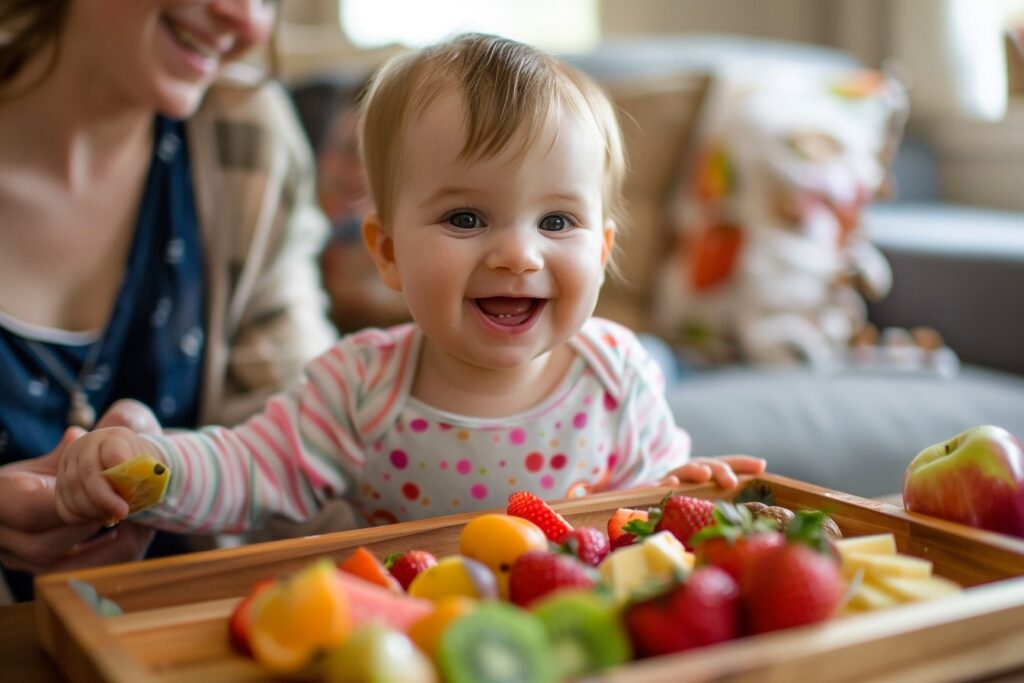Table of Contents
ToggleExploring the Montessori Approach to Baby-Led Weaning: Nurturing Independence and Healthy Eating Habits
Introduction
Picture this: a warm, sunny morning in the Caribbean, with the gentle breeze carrying the scent of ripe mangoes and the sound of laughter filling the air. As a new parent, navigating the maze of feeding practices can feel overwhelming, but what if I told you there’s a way to introduce your little one to the joys of solid foods that not only nourishes their body but also nurtures their spirit of independence?
For many of us deeply rooted in Caribbean culture, food isn’t just sustenance; it’s a celebration of life, family, and community. From the vibrant colors of tropical fruits to the rich aromas of traditional dishes passed down through generations, every meal is an opportunity to connect with our heritage and instill a love for wholesome eating in our children.
Enter the Montessori approach to baby-led weaning—a harmonious blend of educational philosophy and cultural tradition that empowers parents to embrace their child’s natural curiosity and autonomy from the very first bites.
But what exactly is baby-led weaning, and how does it align with the principles of Montessori education? Join me on a journey as we explore the intersection of Caribbean culture and Montessori philosophy in the exciting adventure of introducing our little ones to the world of solid foods.
In this article, we’ll delve deep into the heart of baby-led weaning through the lens of Montessori principles, uncovering practical tips, personal anecdotes, and expert insights along the way. So, grab a seat at the table, savor the flavors of our Caribbean heritage, and let’s embark on this deliciously empowering journey together!
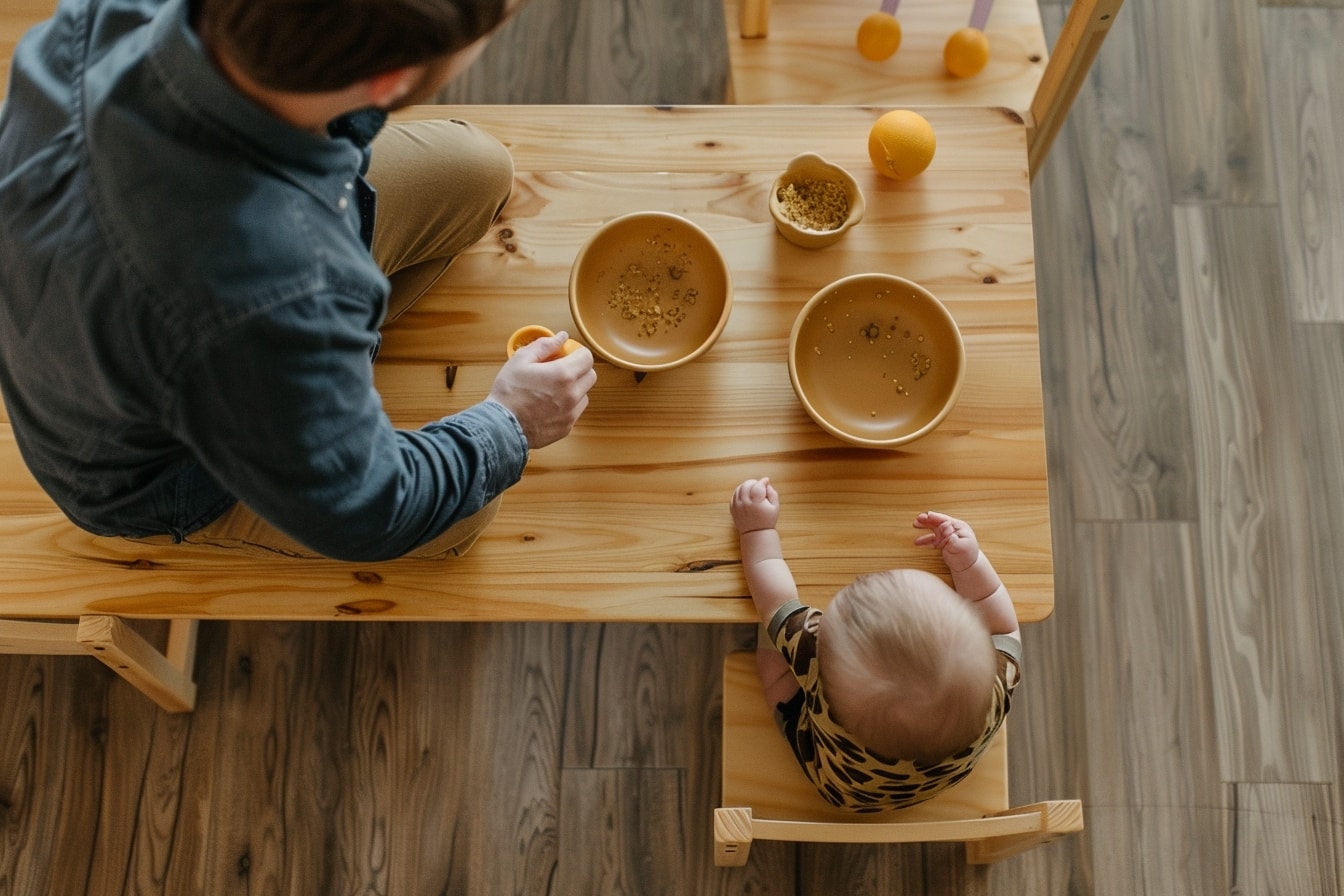
Understanding the Montessori Philosophy
At the heart of the Montessori philosophy lies a profound respect for the innate curiosity, independence, and potential of every child. Drawing inspiration from Dr. Maria Montessori’s groundbreaking work in early childhood education, this approach emphasizes creating a nurturing environment that fosters holistic development and self-directed learning.
One of the fundamental principles of Montessori philosophy is the belief in the child’s natural inclination to explore and learn through hands-on experiences. Rather than imposing rigid structures or timelines, Montessori educators advocate for providing children with the freedom to follow their interests and discover the world at their own pace.
Central to this philosophy is the concept of the prepared environment—a carefully curated space designed to promote independence, concentration, and order. From child-sized furniture and accessible materials to inviting learning corners and peaceful atmospheres, every aspect of the environment is thoughtfully chosen to support the child’s development.
Another key tenet of Montessori philosophy is the role of the adult as a guide and facilitator rather than a teacher in the traditional sense. By observing and understanding each child’s unique needs, interests, and abilities, adults can provide meaningful experiences and opportunities for growth while fostering a sense of autonomy and self-confidence.
Perhaps most importantly, Montessori philosophy emphasizes the importance of respect—for the child, for the environment, and for the learning process itself. By honoring each child’s individuality and treating them as capable and competent individuals, Montessori educators create an atmosphere of trust, collaboration, and mutual respect.
As parents, embracing the Montessori philosophy means recognizing our children as active participants in their own development and providing them with the tools, opportunities, and support they need to thrive. It’s about creating an environment where curiosity is celebrated, independence is encouraged, and learning is a joyful, lifelong journey.
- Encourage exploration and discovery through open-ended toys and materials
- Foster independence by involving children in daily tasks and routines
- Embrace the beauty of simplicity and order in your home environment
- Practice patience and trust in your child’s innate abilities and instincts
- Celebrate each milestone and achievement, no matter how small, with love and encouragement
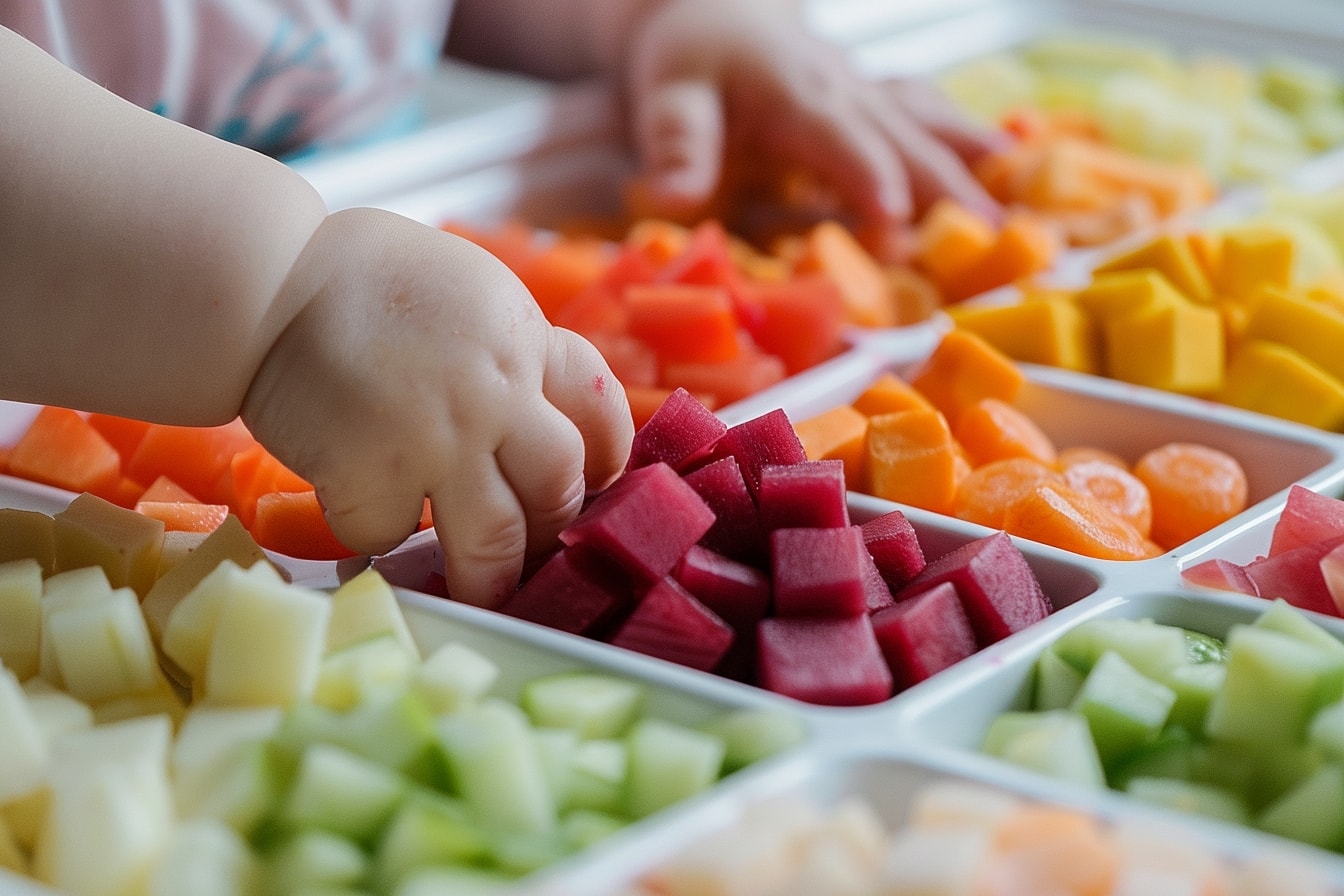
Introduction to Baby-Led Weaning
As parents, one of the most exhilarating yet daunting milestones we face is introducing our little ones to the world of solid foods. From the first tentative tastes of mashed bananas to the joyous mess of exploring new flavors and textures, the journey of weaning is filled with excitement, discovery, and perhaps a hint of apprehension.
But what if I told you there’s a way to approach this milestone that not only simplifies the process but also honors your baby’s natural instincts and developmental readiness? Enter baby-led weaning—a revolutionary approach to introducing solid foods that empowers infants to take the lead in their own feeding journey.
At its core, baby-led weaning is about trusting your baby’s innate ability to self-regulate and explore new foods at their own pace. Unlike traditional weaning methods that rely on spoon-feeding purees, baby-led weaning encourages babies to feed themselves from the very beginning, using their hands to grasp and explore a variety of nutritious foods.
But what sets baby-led weaning apart from other feeding approaches? The answer lies in its emphasis on autonomy, independence, and respect for the child’s developmental readiness. Rather than spoon-feeding purees on a predetermined schedule, baby-led weaning allows babies to participate in family mealtimes, experiment with different tastes and textures, and develop important oral motor skills at their own pace.
As a parent deeply rooted in Caribbean culture, I was drawn to the philosophy of baby-led weaning for its simplicity, its emphasis on wholesome, unprocessed foods, and its celebration of the joy of eating as a communal experience. From introducing ripe slices of mango to sharing bites of flavorful ackee and saltfish, baby-led weaning aligns perfectly with our cultural values of independence, exploration, and nourishment.
- Allow your baby to explore a variety of textures, flavors, and colors
- Offer a mix of fruits, vegetables, grains, and proteins to ensure a balanced diet
- Encourage self-feeding by providing age-appropriate utensils and dishes
- Embrace messiness as a natural part of the learning process and involve your baby in clean-up activities
- Trust your baby’s cues and let them guide the pace of feeding
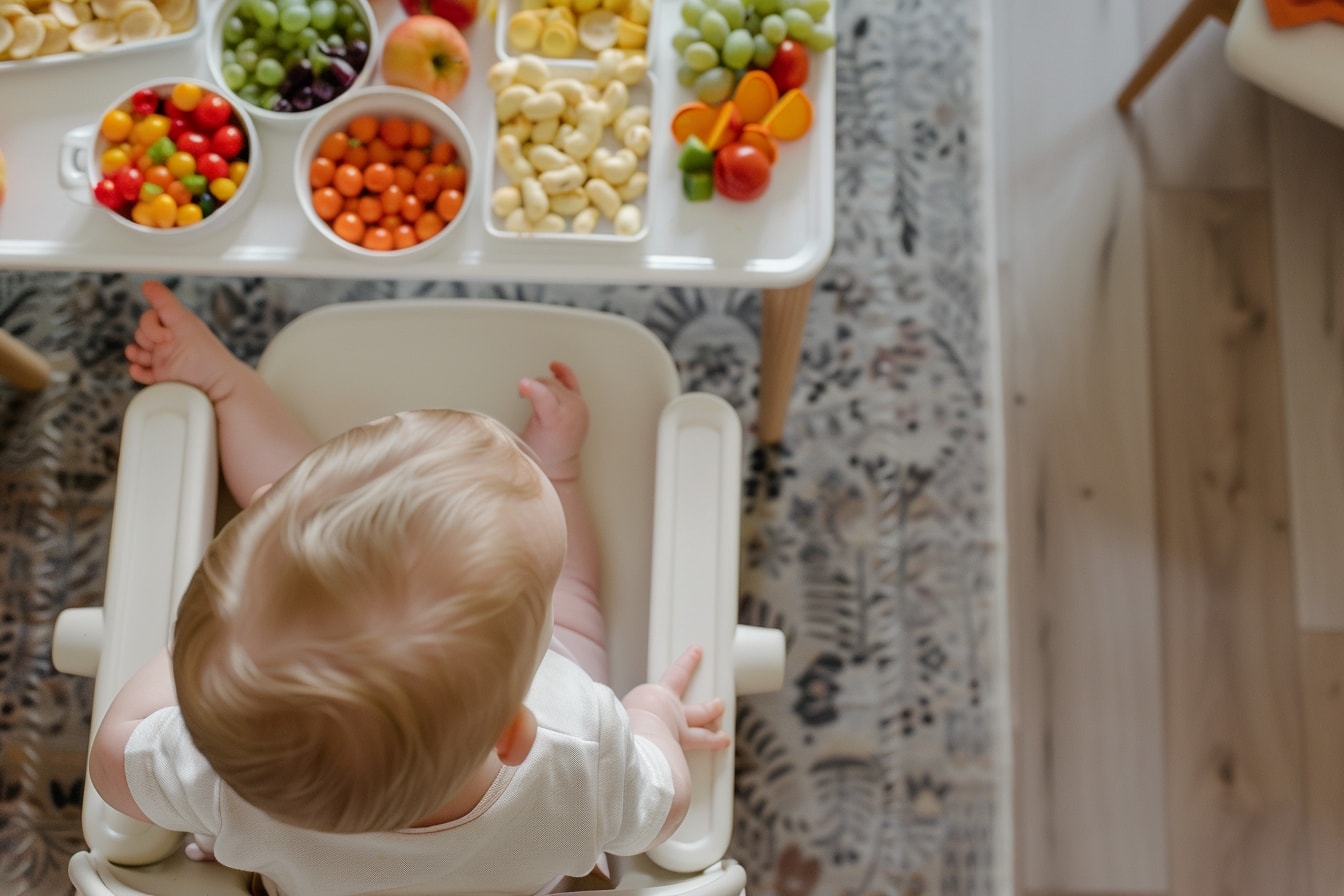
Implementing Baby-Led Weaning the Montessori Way
So, you’ve decided to embark on the adventure of baby-led weaning, embracing the Montessori philosophy of independence, exploration, and respect for your little one’s developmental journey. But where do you begin? How do you create an environment that supports your baby’s natural curiosity and encourages self-directed eating?
Let’s start by setting the stage—a prepared environment that invites your baby to explore, experiment, and engage with their food in a meaningful way. In the Montessori approach to baby-led weaning, this means creating a calm, inviting space free from distractions where your baby can focus on the joy of eating and the sensory experience of food.
Consider investing in a sturdy, child-sized table and chair set that allows your baby to sit comfortably at the family table and participate in mealtimes alongside you. Opt for simple, uncluttered dishes and utensils that are easy for small hands to grasp and manipulate, such as wooden spoons, stainless steel bowls, and silicone bibs for easy clean-up.
When it comes to choosing foods for baby-led weaning, think variety, texture, and nutrition. Introduce a colorful array of fruits, vegetables, grains, and proteins, offering them in their natural, whole form whenever possible. From soft avocado slices to steamed carrot sticks and cooked grains like quinoa or brown rice, the options are endless!
As your baby explores new foods, resist the urge to intervene or guide their hand—instead, observe from a distance, allowing them to touch, taste, and manipulate the food in their own time and in their own way. Offer gentle encouragement and praise for their efforts, celebrating each small victory along the way.
Mealtime is not just about nourishing the body—it’s also an opportunity for learning, connection, and bonding. Embrace the messiness of baby-led weaning as a natural part of the process, involving your baby in clean-up activities and modeling positive eating behaviors.
- Create a calm, inviting environment free from distractions
- Invest in child-sized furniture and utensils that promote independence
- Offer a variety of nutritious foods in their natural, whole form
- Encourage self-feeding by allowing your baby to explore and experiment with their food
- Embrace messiness as a natural part of the learning process and involve your baby in clean-up activities
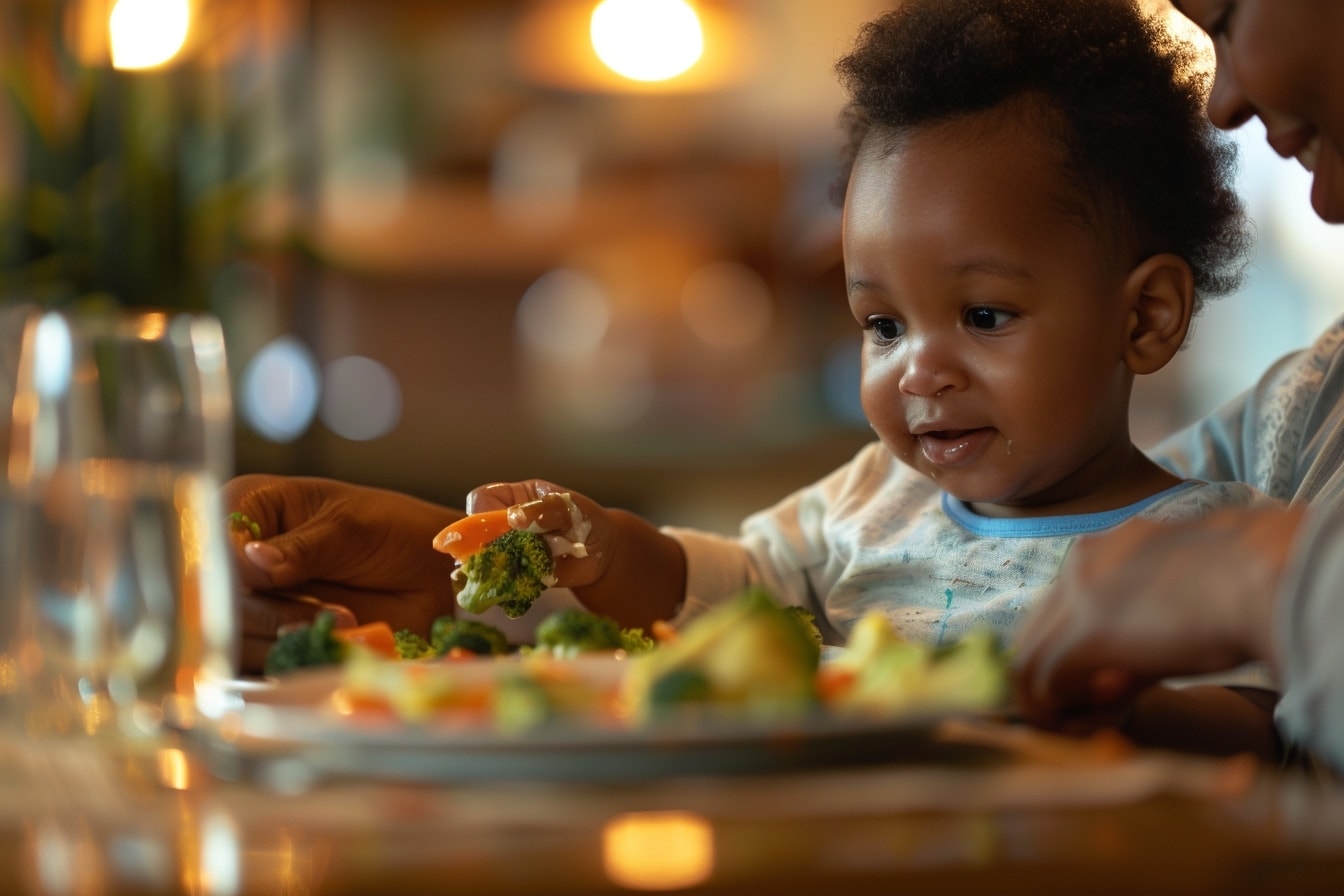
Overcoming Challenges
As exhilarating as the journey of baby-led weaning can be, it’s not without its fair share of challenges along the way. From concerns about choking to navigating picky eating behaviors, parents embarking on this adventure may encounter obstacles that require patience, creativity, and resilience to overcome. But fear not—armed with the right knowledge, strategies, and support, you can navigate these challenges with confidence and grace.
One of the most common concerns parents have about baby-led weaning is the risk of choking. While it’s natural to worry about your baby’s safety, rest assured that when done correctly, baby-led weaning is no more risky than traditional spoon-feeding methods. To minimize the risk of choking, ensure that foods are prepared in appropriate shapes and sizes for your baby’s developmental stage, and always supervise them closely during mealtimes.
Another challenge parents may face during baby-led weaning is managing picky eating behaviors. It’s not uncommon for babies to reject certain foods or show preferences for others, but it’s important not to force or pressure them to eat. Instead, continue offering a variety of nutritious foods in a relaxed, supportive environment, and trust that your baby will eventually develop a taste for a wide range of flavors and textures.
Mealtime messiness can also be a source of frustration for parents, but it’s important to remember that messiness is a natural part of the learning process. Embrace the messiness of baby-led weaning as an opportunity for sensory exploration and discovery, and involve your baby in clean-up activities to foster independence and responsibility.
Lastly, navigating family dynamics and cultural expectations can pose challenges for parents practicing baby-led weaning, especially if it deviates from traditional feeding practices. It’s important to communicate openly with family members and caregivers about your approach to feeding and enlist their support in creating a supportive, inclusive environment for your baby.
- Minimize the risk of choking by preparing foods in appropriate shapes and sizes
- Manage picky eating behaviors by offering a variety of nutritious foods in a relaxed environment
- Embrace mealtime messiness as an opportunity for sensory exploration and learning
- Communicate openly with family members and caregivers about your feeding approach and enlist their support
- Seek support from other parents practicing baby-led weaning and share experiences and tips

Towards Independence
One of the most beautiful aspects of baby-led weaning is its profound impact on fostering independence and self-confidence in our little ones. By allowing babies to take the lead in their feeding journey from the very beginning, we empower them to trust their instincts, explore new foods, and develop important skills that will serve them well throughout life.
From the moment they grasp their first piece of banana or sweet potato, babies participating in baby-led weaning are actively engaged in the process of self-discovery and learning. By encouraging self-feeding and independent exploration of food, parents provide valuable opportunities for babies to develop fine motor skills, hand-eye coordination, and sensory awareness—all essential components of healthy development.
But baby-led weaning is about more than just physical skills—it’s also about nurturing emotional well-being and fostering a positive relationship with food. By allowing babies to dictate the pace and quantity of their meals, parents send a powerful message of trust and respect, reinforcing the idea that their needs and preferences are valued and respected.
As babies grow and become more proficient eaters, the benefits of baby-led weaning extend beyond the dinner table and into other areas of life. By encouraging autonomy and self-sufficiency from an early age, parents lay the foundation for confident, independent individuals who are unafraid to embrace new challenges and explore their passions.
But perhaps the most rewarding aspect of baby-led weaning is the sense of connection and bonding it fosters between parent and child. From sharing meals together to celebrating milestones and achievements, baby-led weaning provides countless opportunities for meaningful interaction and communication, strengthening the parent-child bond and creating lasting memories that will be cherished for years to come.
- Empower babies to trust their instincts and explore new foods at their own pace
- Encourage self-feeding and independent exploration of food to develop fine motor skills and hand-eye coordination
- Foster a positive relationship with food by allowing babies to dictate the pace and quantity of their meals
- Support autonomy and self-sufficiency from an early age to nurture confident, independent individuals
- Strengthen the parent-child bond through meaningful interaction and communication during mealtimes
As we come to the end of our exploration of the Montessori approach to baby-led weaning, I hope you’re feeling inspired and empowered to embark on this deliciously rewarding journey with your little one. From embracing the principles of independence and self-directed learning to celebrating the joy of discovery and connection at the family table, baby-led weaning offers a truly transformative experience for both parent and child.
But remember, baby-led weaning is not just about what’s on the plate—it’s about fostering a lifelong love of wholesome eating, nurturing independence, and building strong, trusting relationships with our children. So, as you continue on this adventure, savor each messy, marvelous moment, and embrace the opportunity to nourish both body and soul.
Whether you’re introducing ripe slices of mango or sharing bites of flavorful Caribbean cuisine, let each mealtime be a celebration of culture, community, and connection. And as your baby grows and thrives, may the lessons learned at the family table serve as a foundation for a lifetime of health, happiness, and harmony.
So, here’s to the joy of discovery, the power of independence, and the beauty of baby-led weaning. May your journey be filled with laughter, love, and lots of delicious adventures!
Want to take your knowledge to the next level? Check out these must-read articles:
- Infant-Friendly Montessori Activities for Every Developmental Stage
- Montessori and Sleep: Creating a Calm and Cozy Environment
Organize your baby’s wardrobe with our baby clothes closet organizer products! Our organizers are designed specifically for baby clothes. Get your baby’s clothes neat and tidy with our selection of organizers – shop now!
Step into Sue Brown's World of Baby Care, where you'll find a treasure trove of knowledge and wisdom waiting to be explored. Sue's dedication to providing accurate and up-to-date information on baby care shines through in every article, blog post, and resource she shares. From newborn essentials to sleep training tips, breastfeeding advice to nurturing your baby's development, Sue covers a wide range of topics that are essential for every parent to know. Her warm and compassionate approach creates a sense of community and reassurance, making her website a safe haven for parents seeking guidance and support. Let Sue Brown be your partner in this beautiful journey of parenthood, as she empowers you to create a loving, nurturing, and thriving environment for your little one.
- Indoor Air Quality for Infant Respiratory Health - October 20, 2025
- Positive Discipline Foundations: Setting the Stage From Infancy - October 18, 2025
- 2025’s Most Innovative Baby Products Worth the Investment - October 16, 2025
Other Great Posts:
- How to nurture your baby’s creativity and innovation by encouraging them to think outside the box and find multiple solutions
- Developing Emotional Intelligence in Infancy: A Growth Mindset Approach
- Exploring the World: Cultivating Curiosity in Infants
- How to practice respectful communication and observation with your baby

